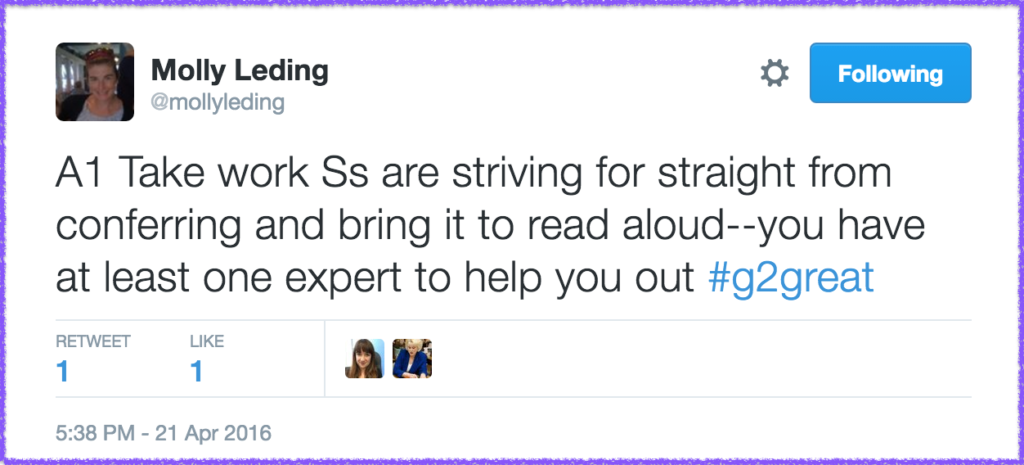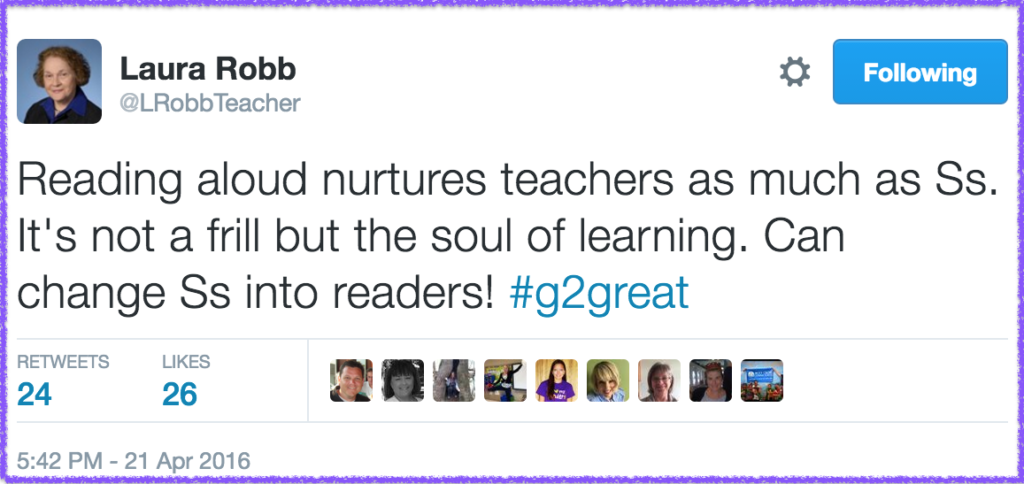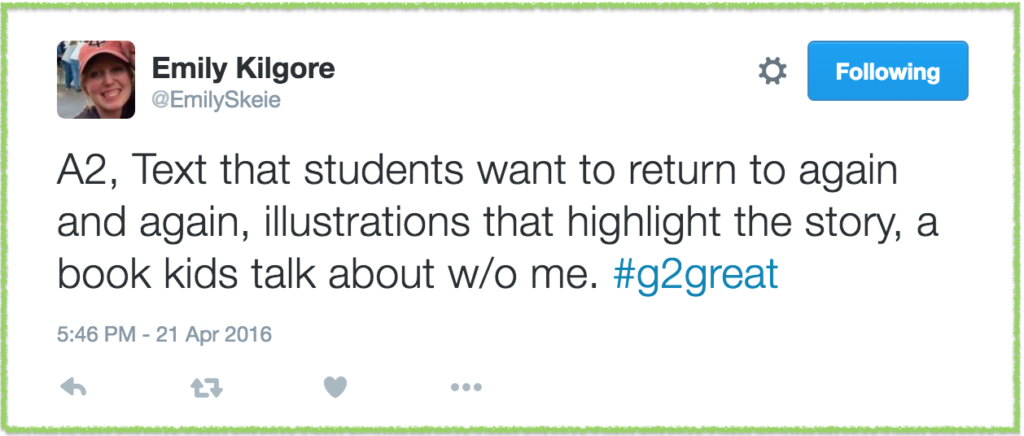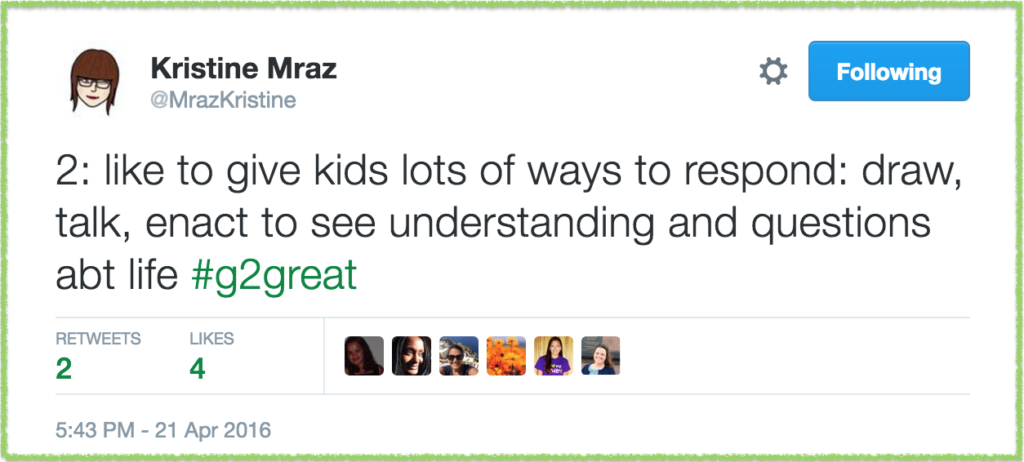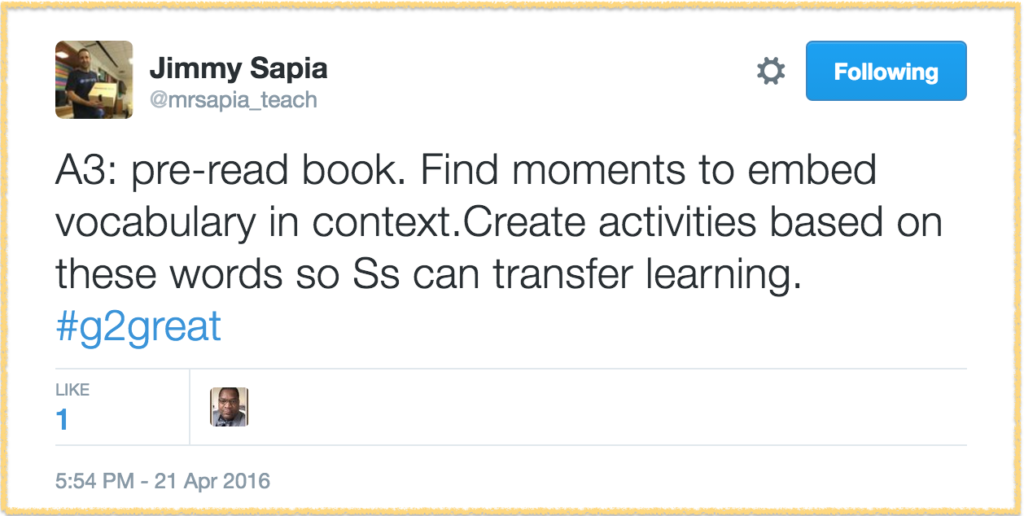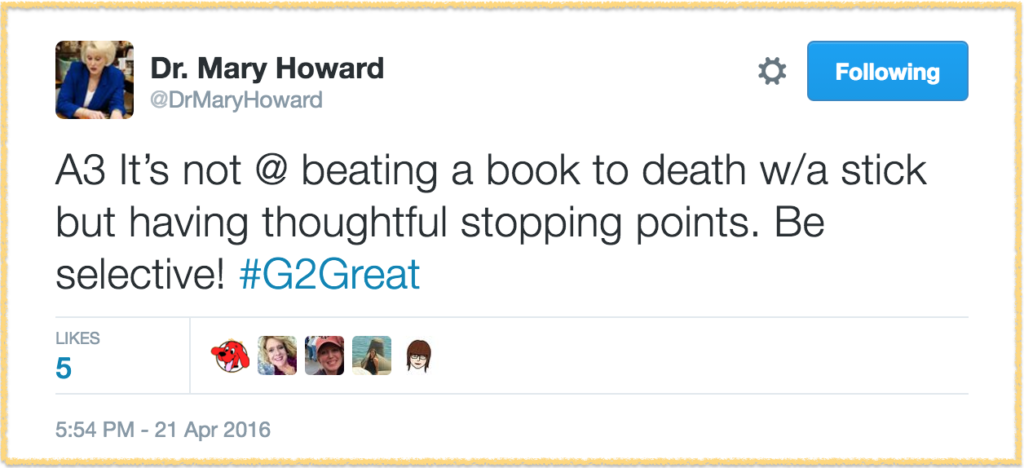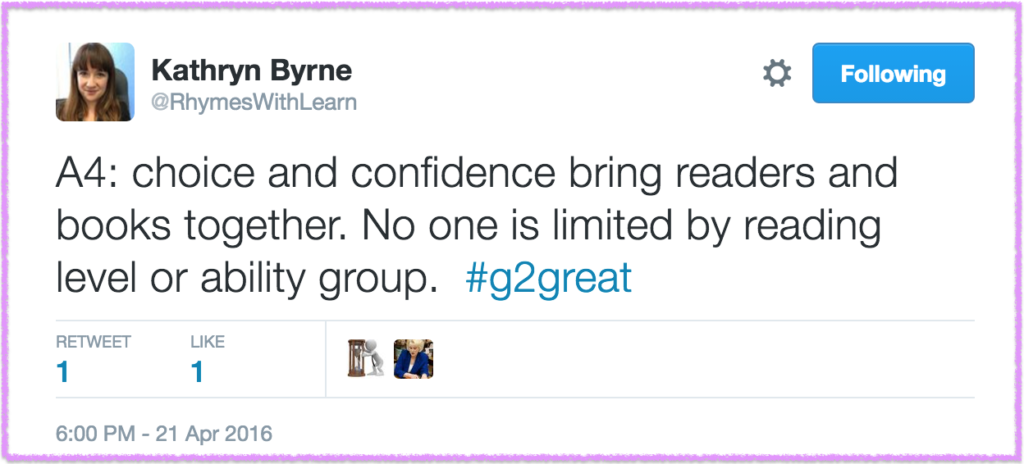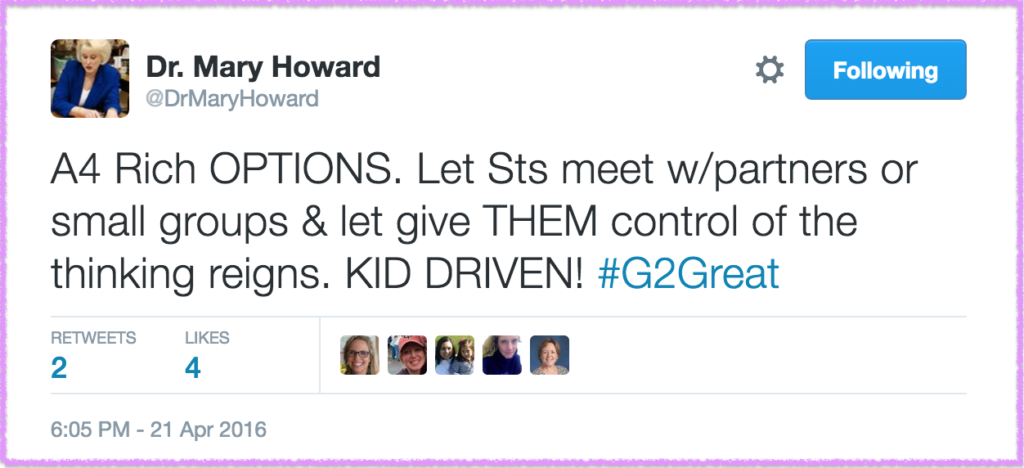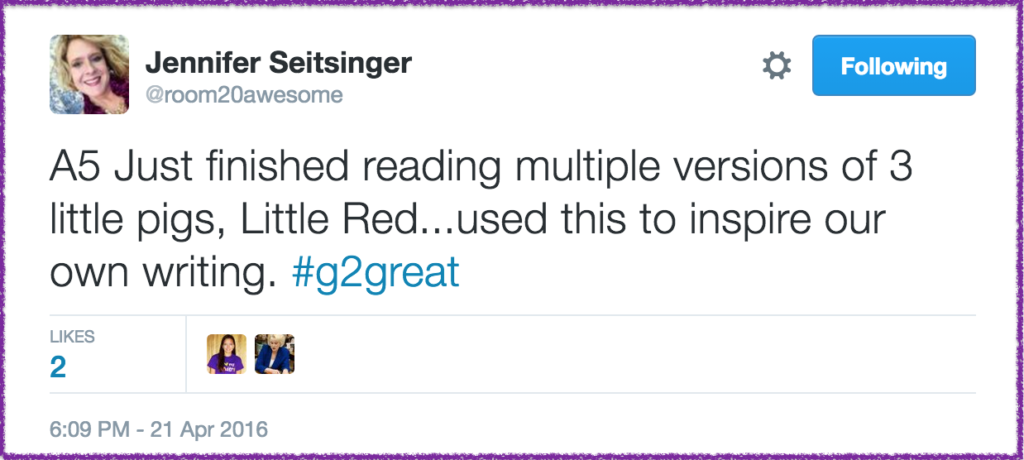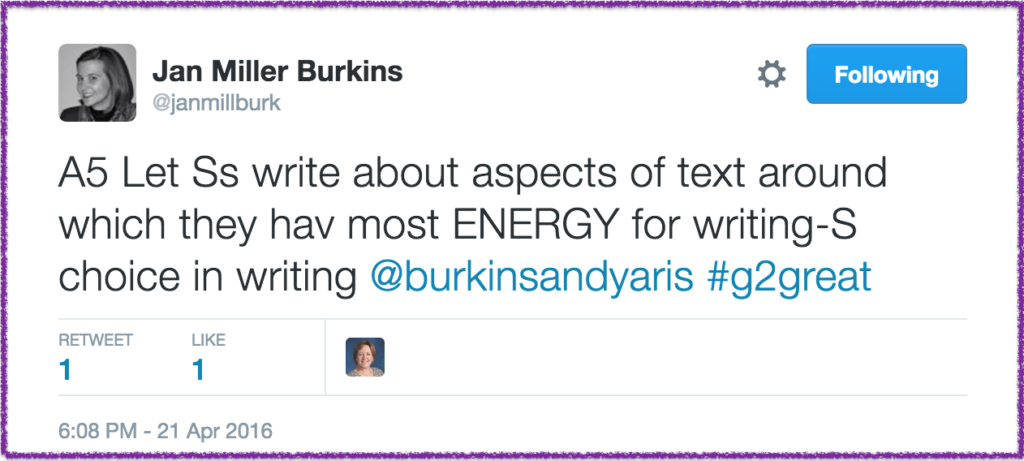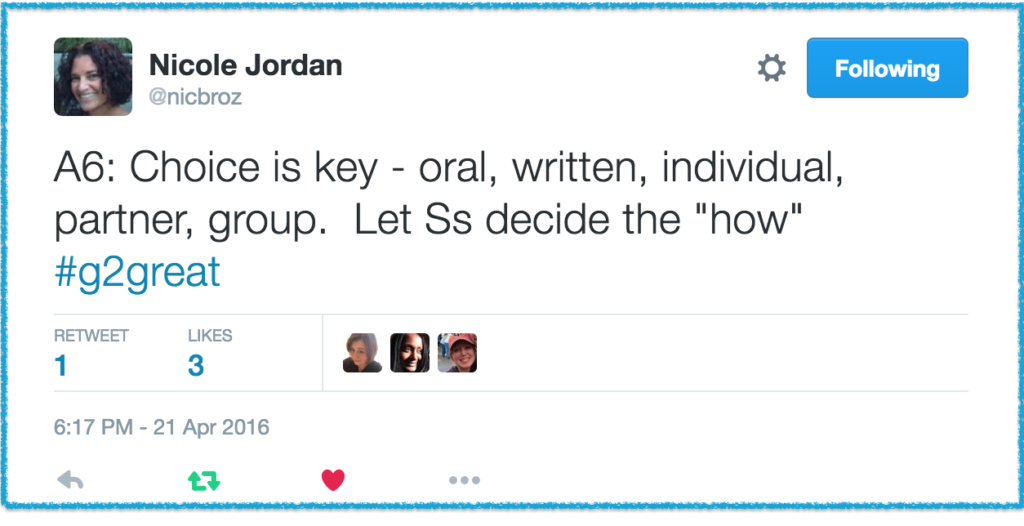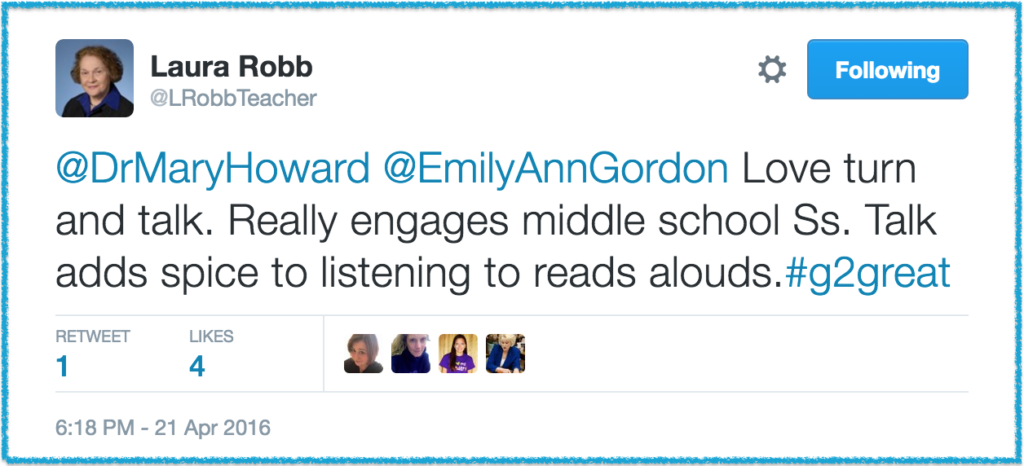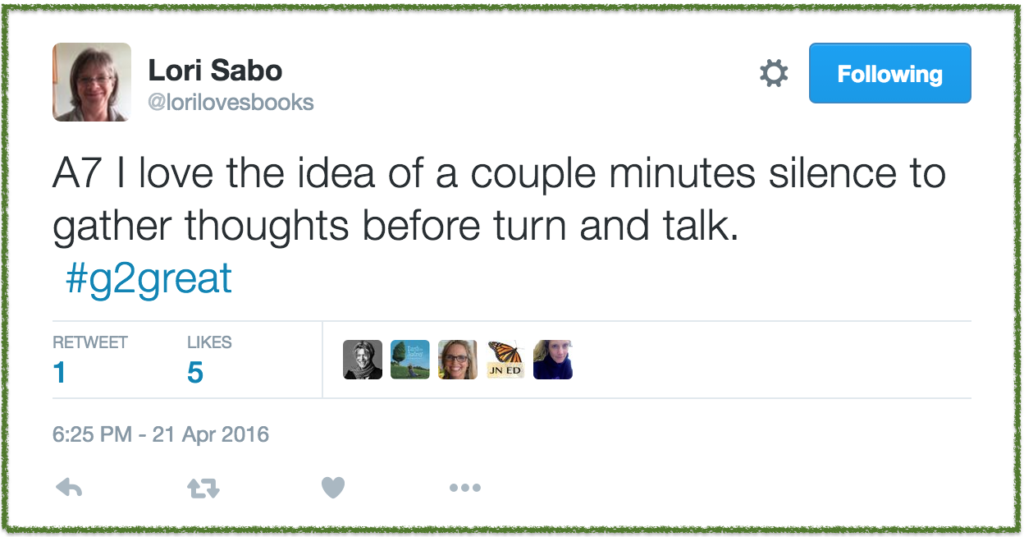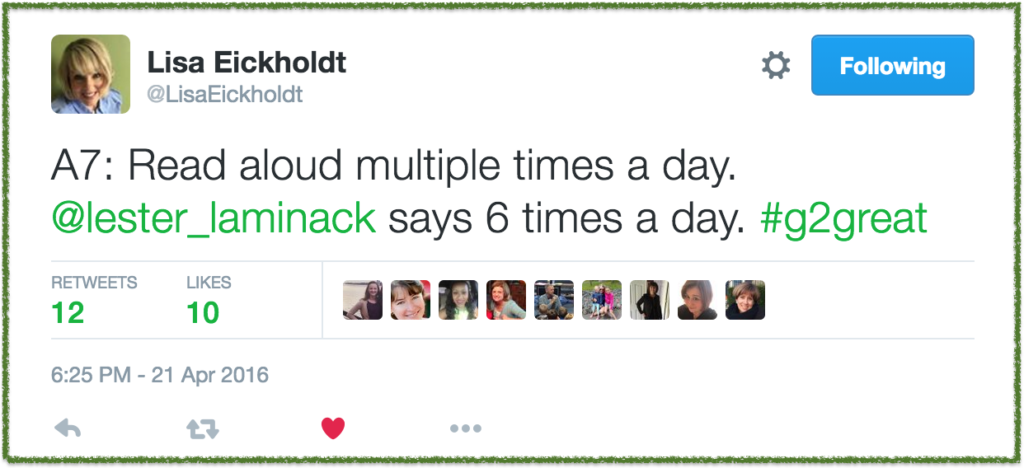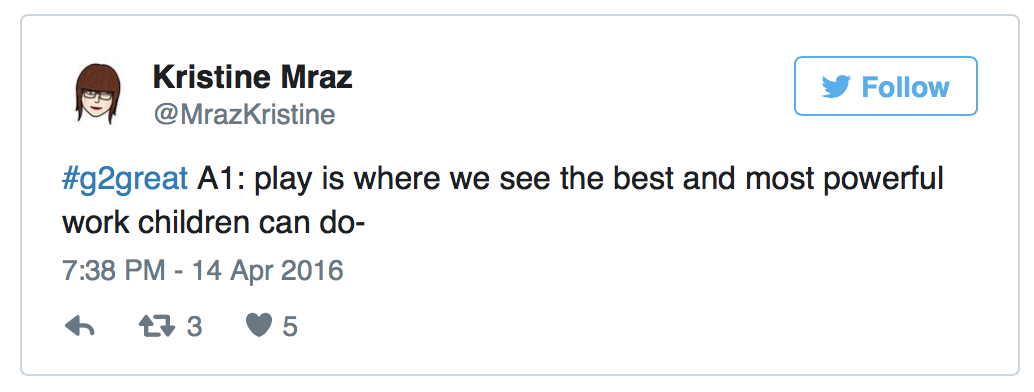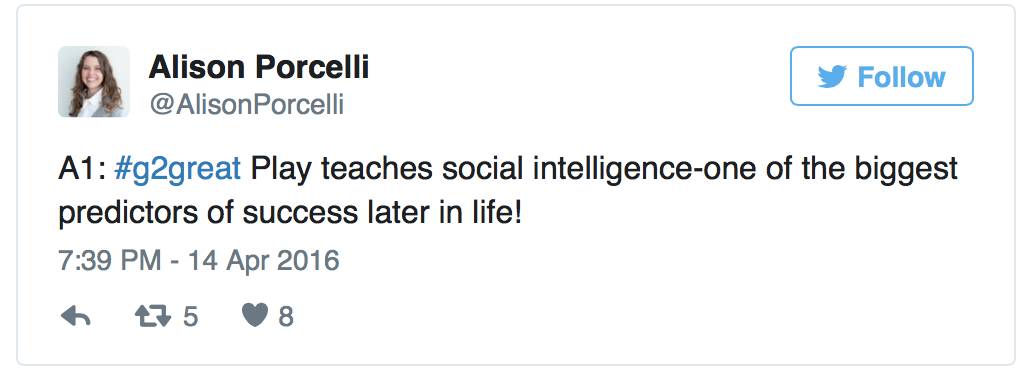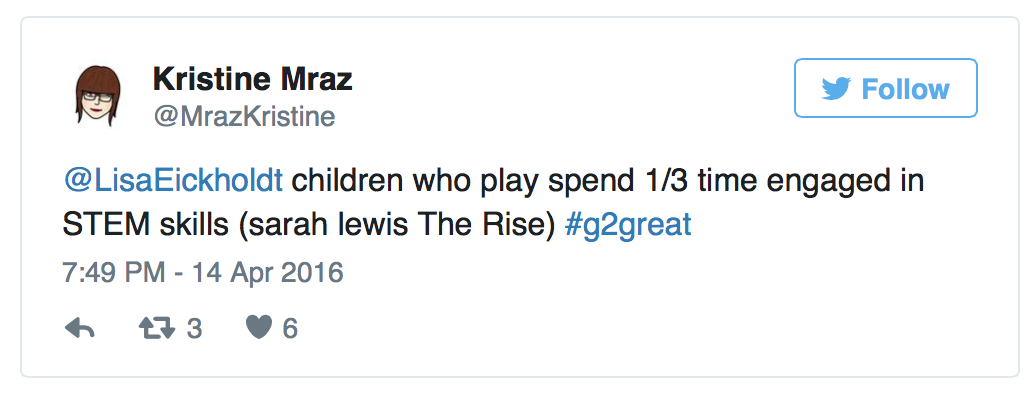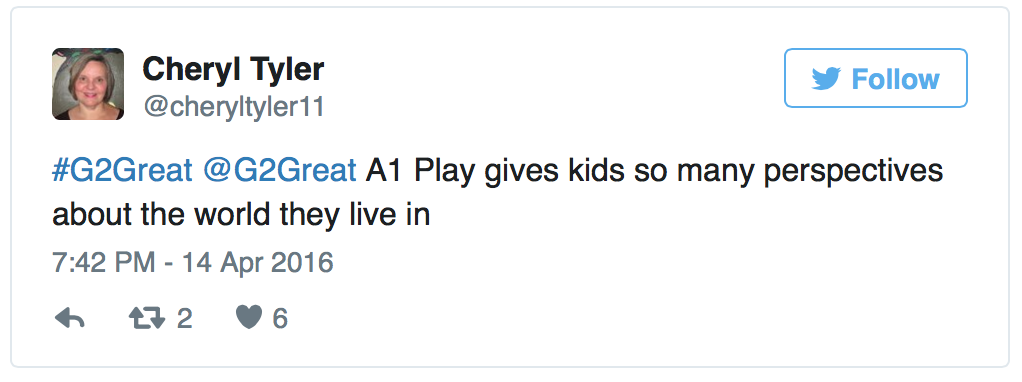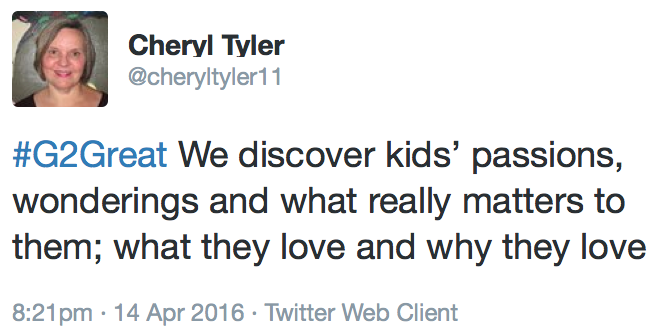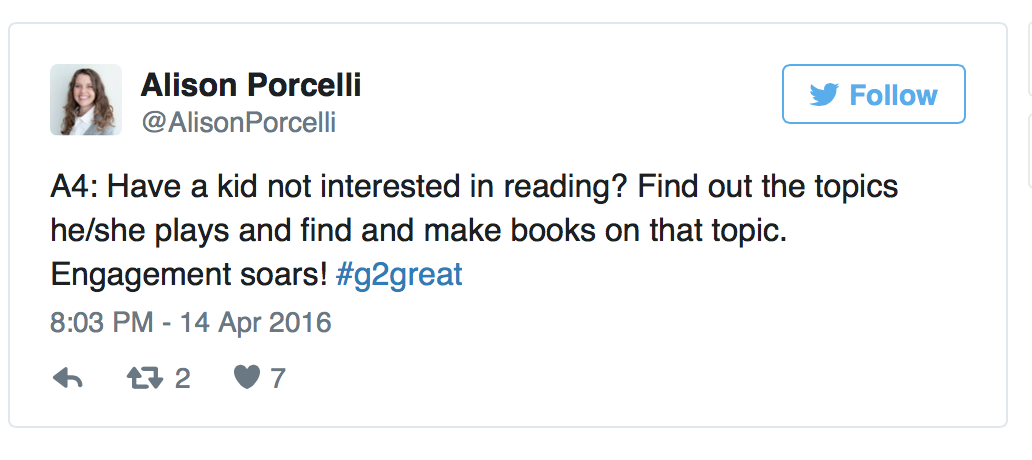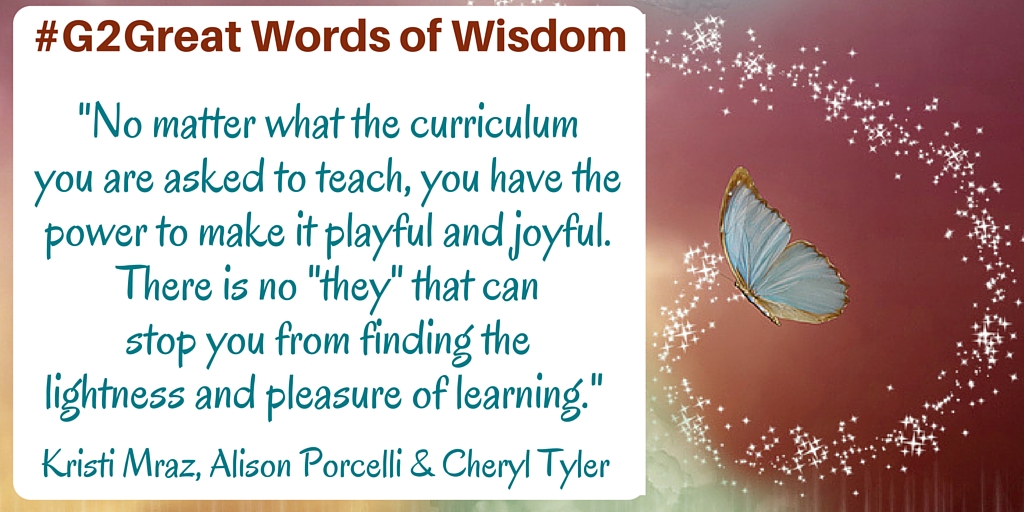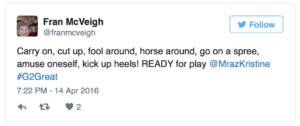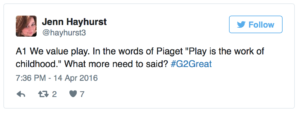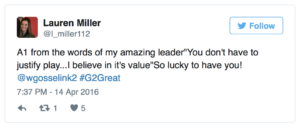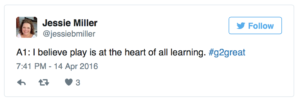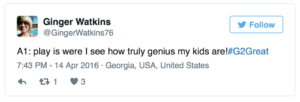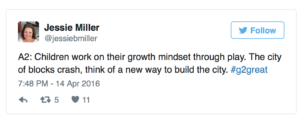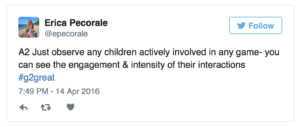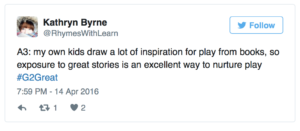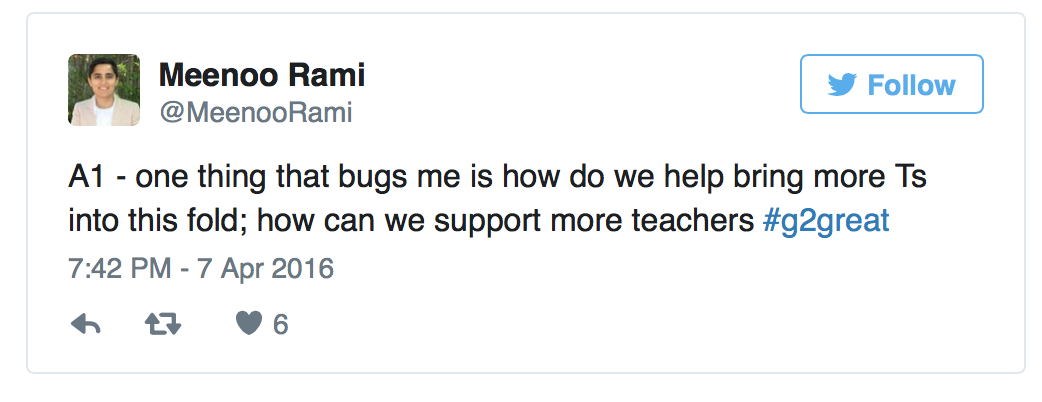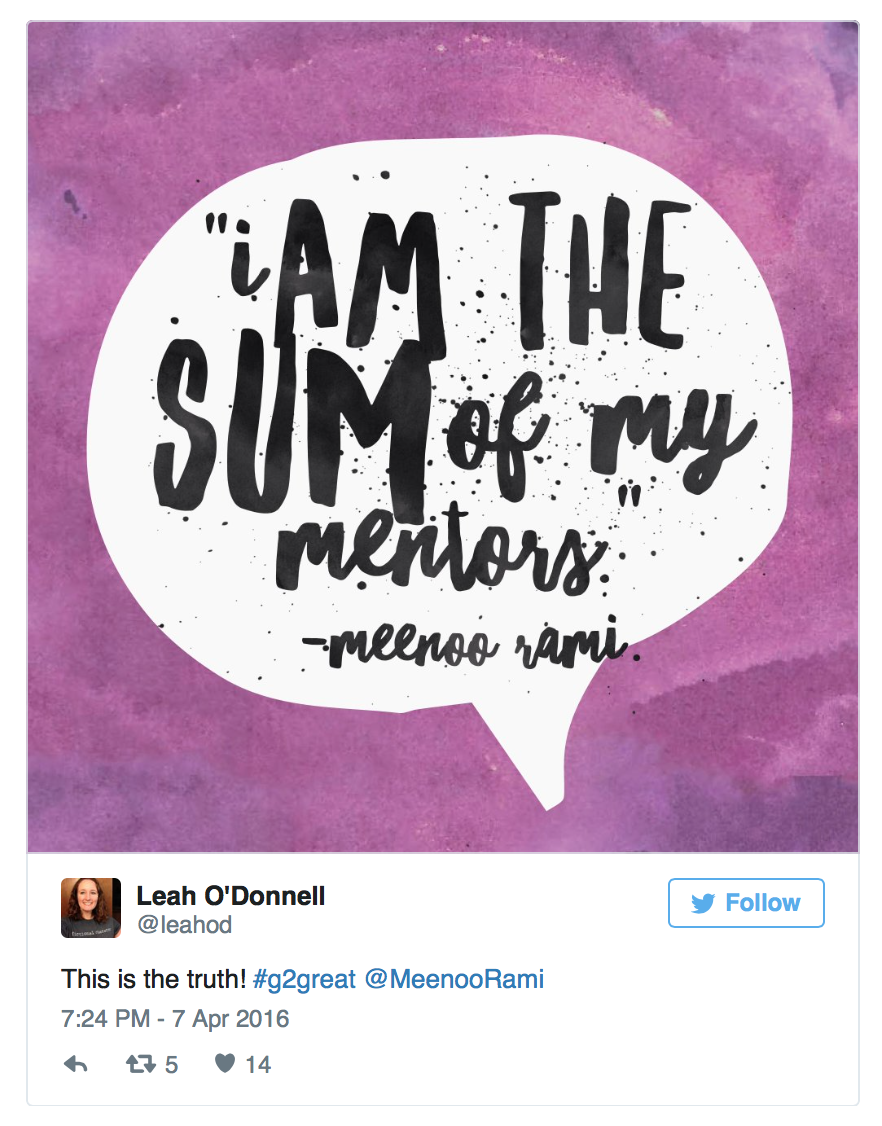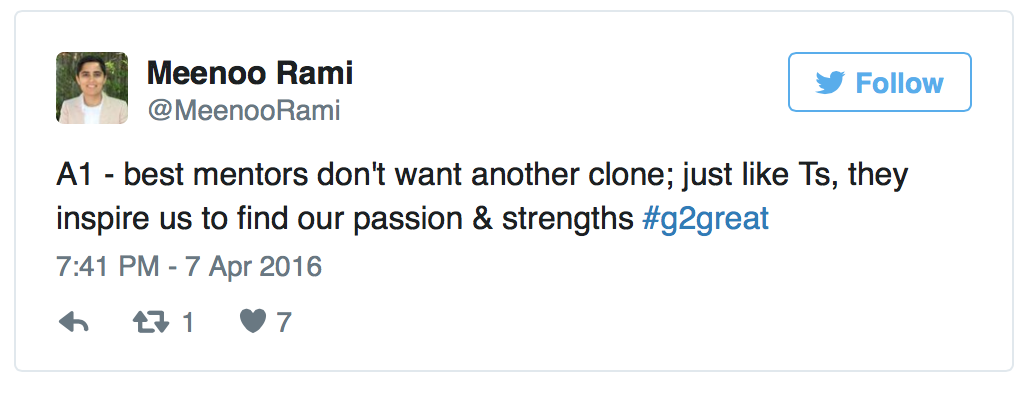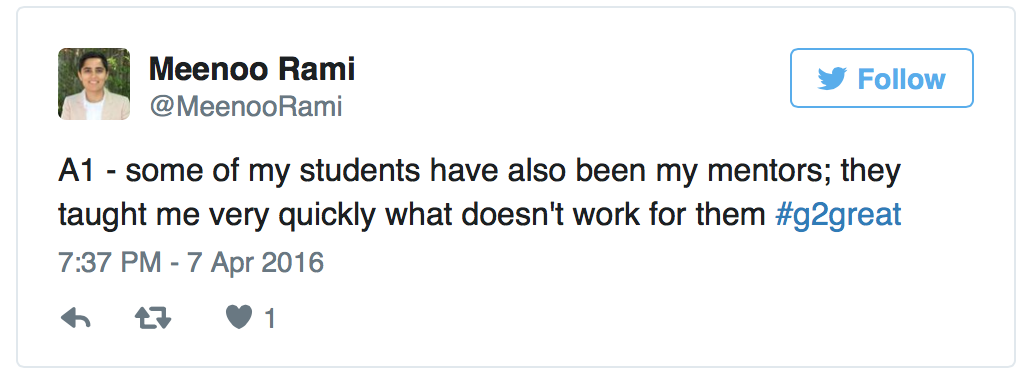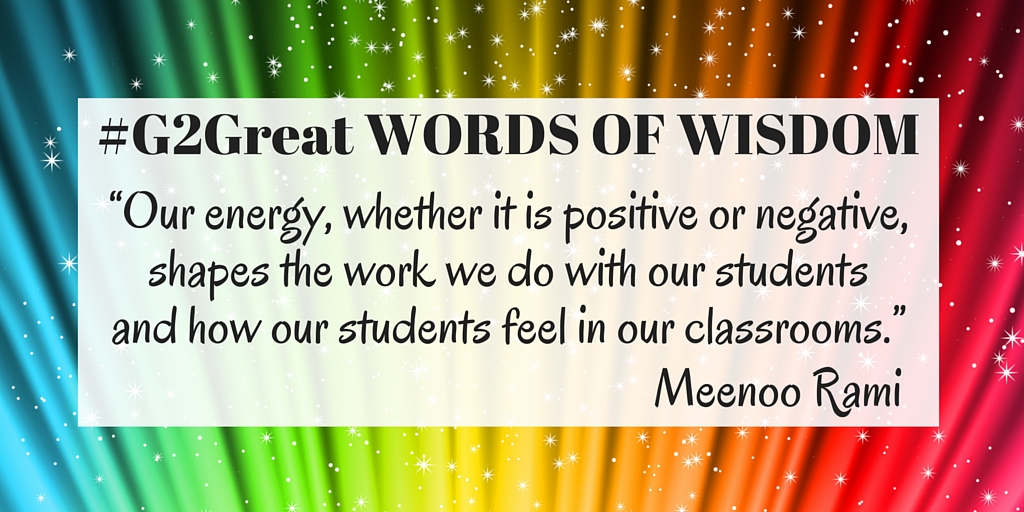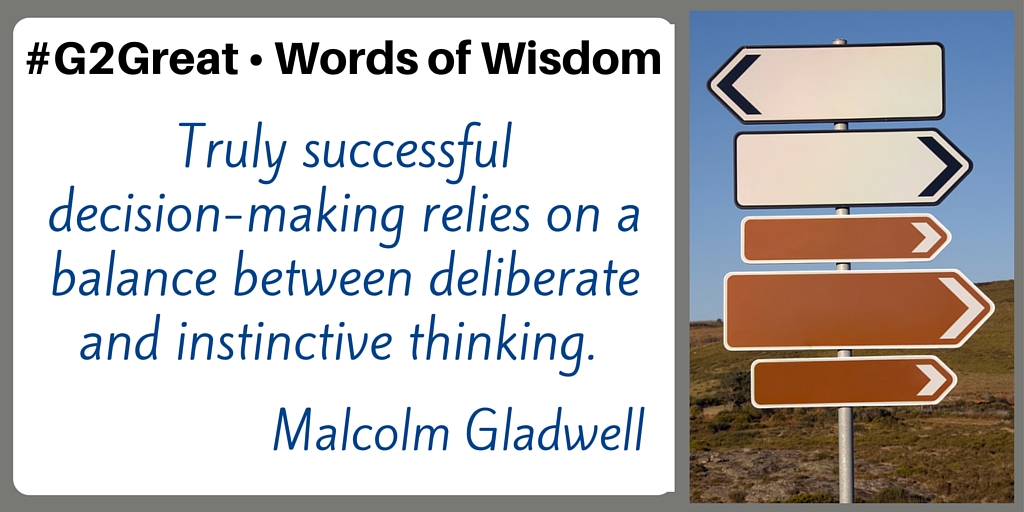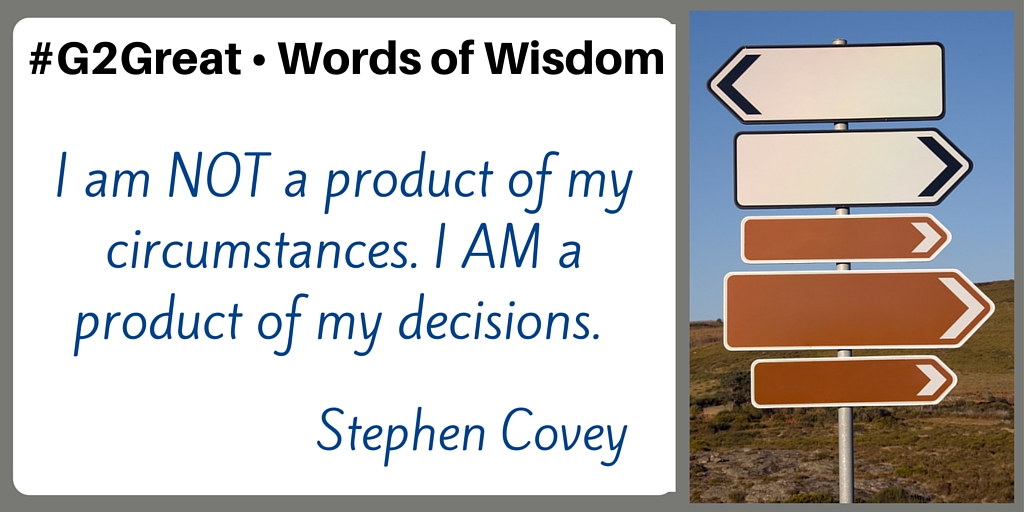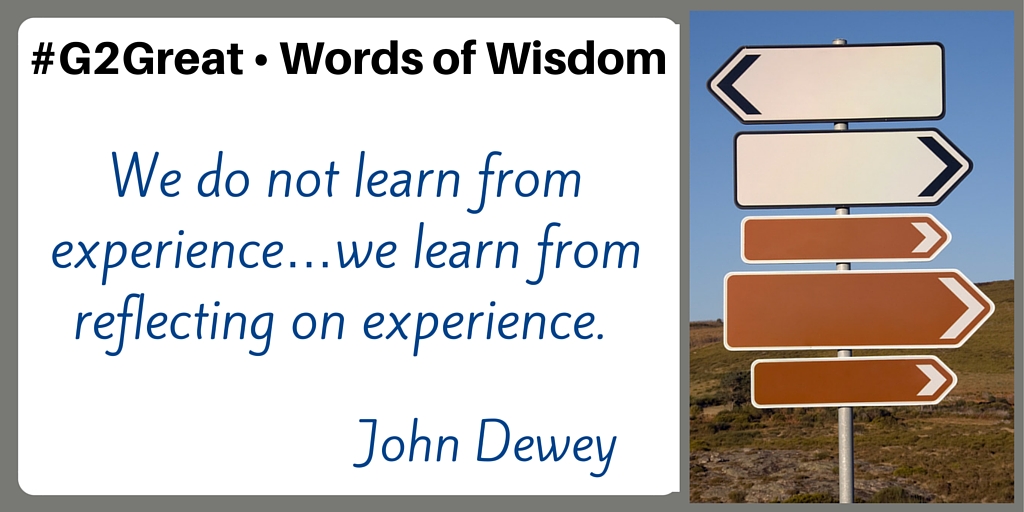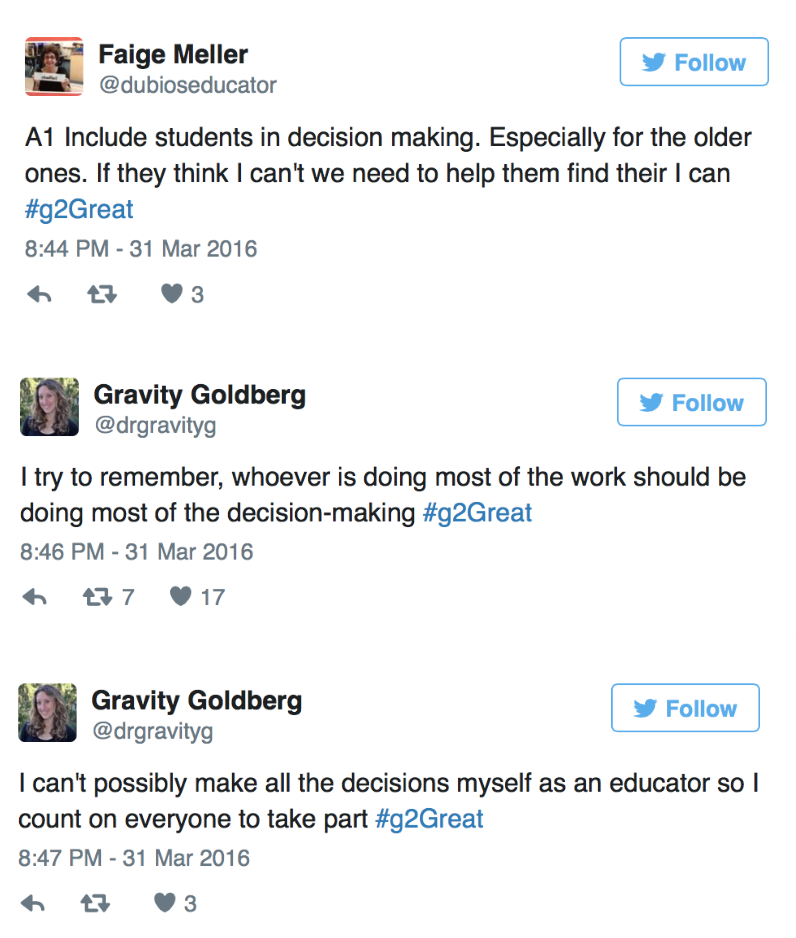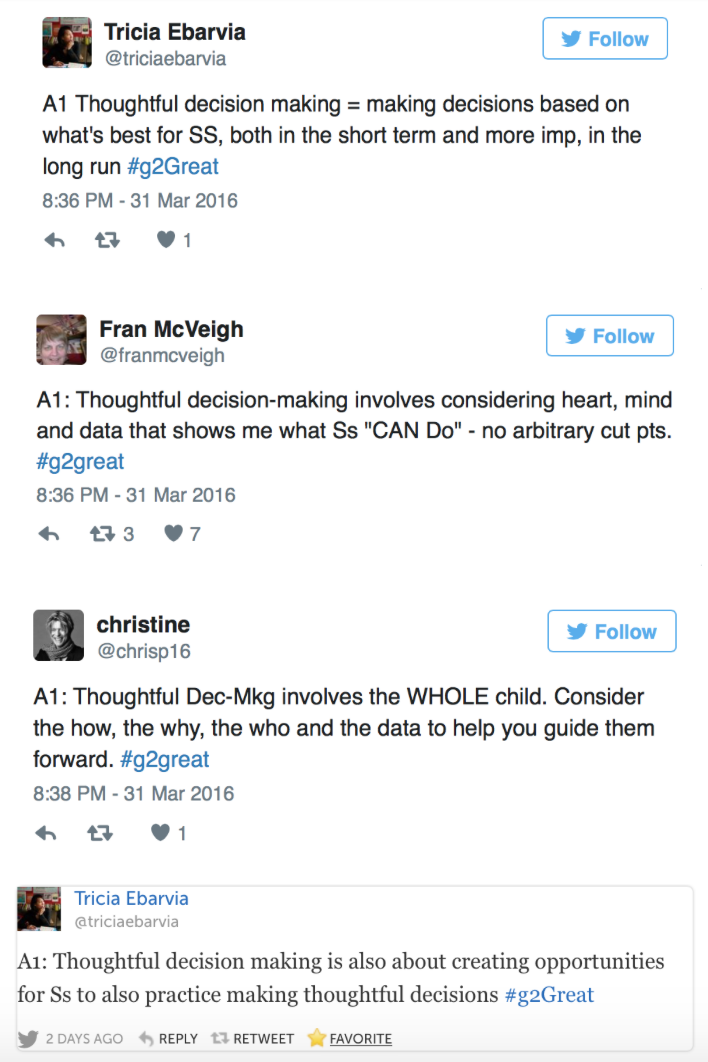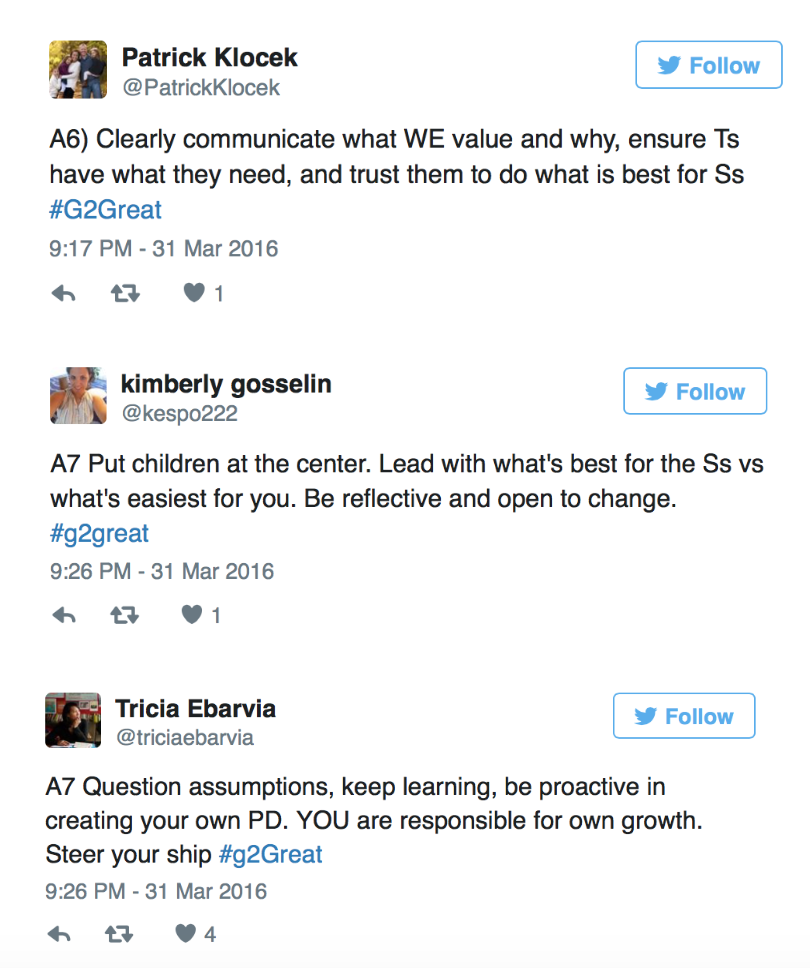Jenn Hayhurst
How can we use read-aloud as a springboard to reading, writing and thinking? This was the question that sparked the first of a #G2Great four part series: Teaching With Intention Maximizing Our Instructional Power Potential. Our chat on April 21, 2016 has come and gone but I am left feeling refreshed and renewed as I begin this post. Even though educators came to this conversation from different points in their careers, everyone learns from each other. What does this plurality of thinking offer us? Clarity. It is that clarity and our ability to respond to our own questions about read-aloud that help us to maximize our professional potential.
Q1 How can we more intentionally frame read-aloud to increase student engagement in ways that maximize our instructional POWER POTENTIAL?
Takeaways: Real engagement is not show and tell, it is experience and learn:
- Read-aloud energizes engagement through student interests
- We elevate our students’ status and create relevant experiences
- We move away from compliance towards ownership
- We create readers who love to read
Q2 What do you look for when using read-aloud as a flexible instructional springboard?
Takeaways: Stories and ideas flood students thinking through read aloud:
- This creates an intellectual and social context for learners
- Reading aloud opens pathways for communication, to promote deeper understanding
- Making room for students to talk, draw, or write is a scaffold to express abstract thinking in tangible ways
Q3 Read-aloud is a powerful framework to build language & vocabulary. What can we do to intentionally enhance those goals?
Takeaways: It is our own questions that help us to grow:
- Begin by starting with texts that you love, then find out what your students love. How do we use this fertile ground to grow relationships?
- Instructional planning is organized around meaning making. How do my students learn best so they can access this text?
- Whenever we stop the flow of the story be mindful of the enjoyment factor. How do I use the structure of different genres to select my stopping points and demystify the author’s craft?
- Build vocabulary lessons from context to allow students to practice and transfer. How can I use the classroom environment to promote transfer for all students?
Q4 Peer collaboration and sharing is a crucial aspect of read-aloud. What is your favorite approach to bring readers and books together?
Takeaways: Read-aloud is an experience that we can use to structure meaningful collaboration:
- See students for who they are and let their interests drive them
- Plan in options for collaborative learning
- Use kidwatching to gather formative data
Q5 How can we integrate writing so the writing will elevate the academic AND emotional experience of the read-aloud?
Takeaways: When I put these tweets together it’s pure instructional magic:
- Reading multiple versions of a story reveals the author’s craft so students can attempt to transfer learning to their own writing
- Considering what a student decides to write about reveals their perspective to us while promoting engagement
Q6 Varied flexible reflection options after read-aloud allow us to create a more personalized experience. What options do you offer?
Takeaways: Read-aloud and reflection work hand-in-hand:
- Give students options to make a choice for how to reflect: written, partners, groups
- Don’t let this dynamic learning end in elementary school. Middle schoolers need instructional techniques like turn and talk to engage their reflections too
Q7 Based on #G2Great chat tonight, what is one instructional shift you will make so that your read-aloud is more intentional?
Takeaways: Teachers are willing to modify their practices based on their own learning. Professional collaboration allows us to fine tune our practices:
As I reflect on our #G2Great chat on read-aloud I am reminded how important it is to collect students’ thinking through: anecdotal note taking, reader’s notebooks, post-its, and exit slips. I use each of these things to look for patterns in their thinking. This is live data that can help me to differentiate and drive comprehension instruction with even greater intention. My collaboration with Jill DeRosa a third grade teacher in my building, elevates my thinking around keeping the child at the center of all we do, by asking the question: “Where is the child in all of this?” We responded to this questions in two recent posts, Unlocking Each Other’s Potential and You Can’t Do This Work By Yourself
Each Thursday night #G2Great teachers from all over the world come together to do the work that we need to do to become more skilled at our craft. To think about ways that will help our students thrive and grow. Thank you for helping me to think deeper and longer so that I can continue to grow my practice. As each of us grow together, it is our students who reap the benefits of our collective learning.

